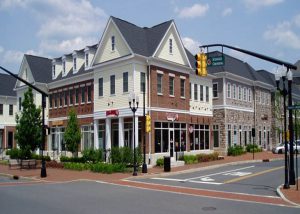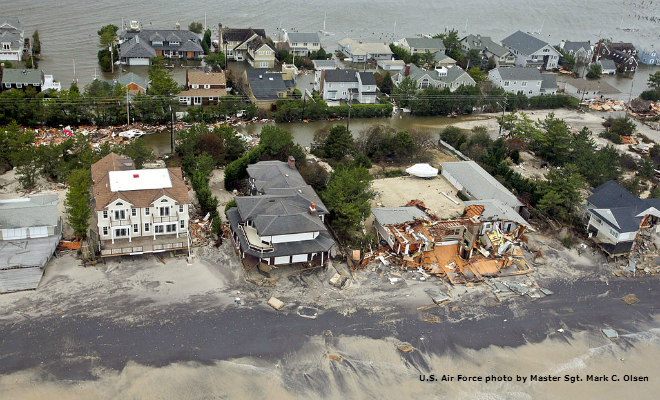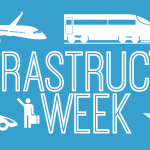New Jersey Future Blog
Forum Roundup: Reimagining the Suburbs
March 27th, 2017 by Tim Evans
New Jersey Future’s 2017 Redevelopment Forum featured among its breakout sessions a two-part series on redefining suburbs to adapt to changing demographic realities. The morning session highlighted demographic and economic trends that are driving new demand for in-town living and “live-work-play” environments. The afternoon session then featured practitioners who have worked on projects of various types that had in common the goal of attracting new residents who are looking for a compact, walkable, mixed-use center.
‘Bet on the boroughs’
The first afternoon panelist, Jim Constantine, a principal at the architecture firm Looney Ricks Kiss, reiterated the morning session’s point about the Millennial generation gravitating toward walkable urbanism and suggested that a good strategy for New Jersey for attracting them is to “bet on the boroughs.” New Jersey’s many boroughs and towns possess a lot of the same assets that bigger cities do – a mix of housing types, a traditional downtown within walking distance of residential neighborhoods, a grid street network – even though people think of them as “suburbs.” In other words, many of the attributes that are drawing Millennials to cities can also be found in the boroughs. And these attributes are critical; Mr. Constantine noted that Millennials often choose the place where they want to live before they even choose a job.
Mr. Constantine discussed a variety of infill projects in three New Jersey boroughs: Metuchen, Hightstown, and Highland Park. Many of these projects were built on land previously devoted to surface parking lots, which probably represent the most common redevelopment/infill opportunity available to older, mostly built-out boroughs. Some of them involved converting vacant industrial buildings to residential use, another option that is frequently available to former factory towns. Some involved adding multi-family housing, often with retail on the ground level. Diversifying the housing stock by adding multi-family housing and townhouses is a good way to attract Millennials, who may not yet be aspiring to homeownership or who are willing to forgo a larger lot in favor of being within walking distance of bars, restaurants, and other in-town amenities.
Some of these projects also incorporate new urban open spaces, in some cases including opening up access to formerly moribund waterfronts. Because older boroughs are often undersupplied with green space, adding to the supply is a good way for a redevelopment project to make itself more attractive to existing residents. Mr. Constantine mentioned that all of these changes can be made easier by declaring an “area in need of rehabilitation,” which will allow the borough a greater degree of control over the design of infill projects.
Build new
But what about municipalities that don’t already have downtowns? Are there ways of making them more borough-like? The other two presenters – Mark Cannuli of Sharbell Development Group and Eatontown Mayor Dennis Connelly – addressed this question from two different perspectives. Mr. Cannuli, who worked on the town-center projects in Robbinsville and Plainsboro, two exurban townships that had previously lacked anything resembling a downtown, spoke about the challenges of constructing an entire mixed-use center from the ground up. Robbinsville and Plainsboro were both blessed with two important ingredients for creating a brand-new center: municipal leadership with the will to do so, and vacant land with which to work. Yet each project took more than a decade to bring to fruition, partly because of the need to unlearn some of the restrictive facets of suburban zoning. Making zoning more flexible, to allow things like alleys behind houses, a mix of housing types on the same block, and apartments above retail, is a way for other suburbs to lay the groundwork ahead of time for creating centers of their own.
In Robbinsville, the township also had to negotiate with the NJDOT to get on-street parking in the retail area, an important component in creating a “downtown” atmosphere. And allowing for shared parking – a concept likely to be foreign to many car-oriented suburban townships – was a way to balance the parking needs of the residential and retail components of the town center. Many of the things that boroughs take for granted are novel concepts in a formerly car-oriented suburban township and often must be explicitly planned for before a center can take shape.
Retrofit
Mayor Connelly’s current challenges are different from Mr. Cannuli’s. Eatontown does not have large tracts of undeveloped land like Robbinsville and Plainsboro did, upon which to construct a new center in one broad sweep. Instead, it is attempting to create a center by retrofitting the Monmouth Mall, a stereotypical shopping mall that began life as an outdoor shopping center in 1960 and was converted to an enclosed mall in 1975. The mall’s new owners (and the mayor) recognized it as a legacy of the age of automobile-centric suburban development and could see that, even though it is still financially healthy today, “if it falls, it will fall hard,” as the mayor put it. Wanting to be proactive about turning the mall into a live-work-play environment, they sought to add housing – including multi-story apartment buildings – to the property, as well as a hotel and an office component, to be tied together with pedestrian walkways and public spaces.
But as in Robbinsville and Plainsboro, transforming a single-use development into a mixed-use neighborhood in a suburb that grew up in the age of the automobile requires making changes to the zoning, changes that will not always be welcomed by the project’s neighbors. The mall’s owners originally wanted 1,200 new housing units on the property but have scaled back to about 700 because of resistance from existing residents – resistance that almost killed the entire project. Developers, property owners, and municipal officials need to be prepared for some existing residents in places without a traditional downtown to be resistant to the idea of creating one.

















